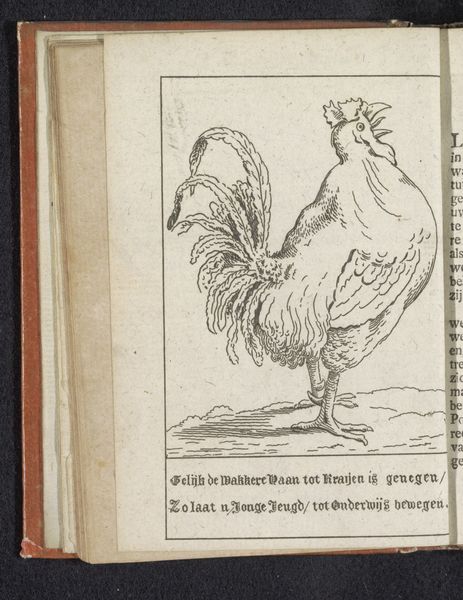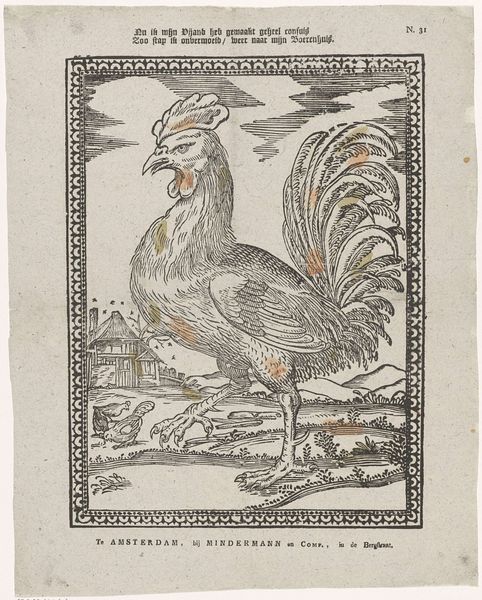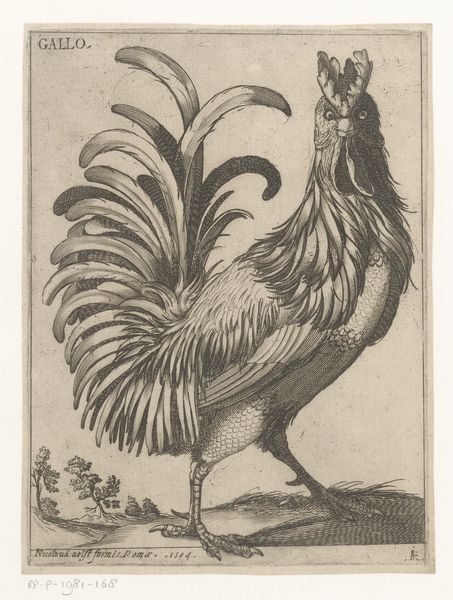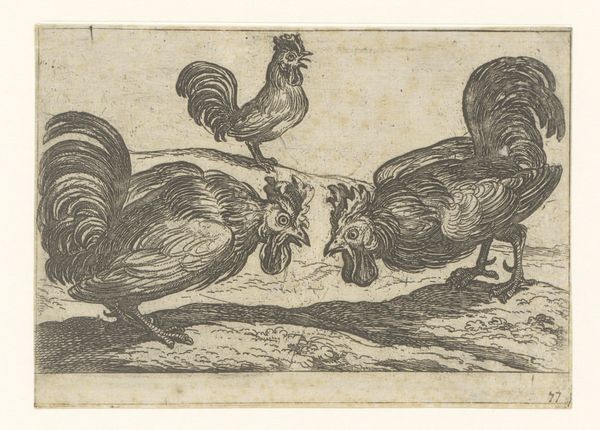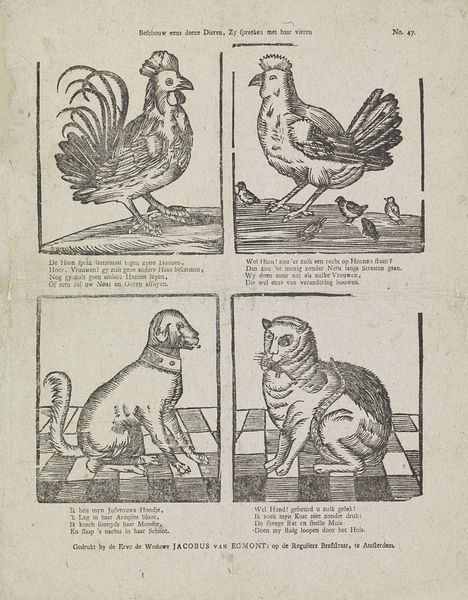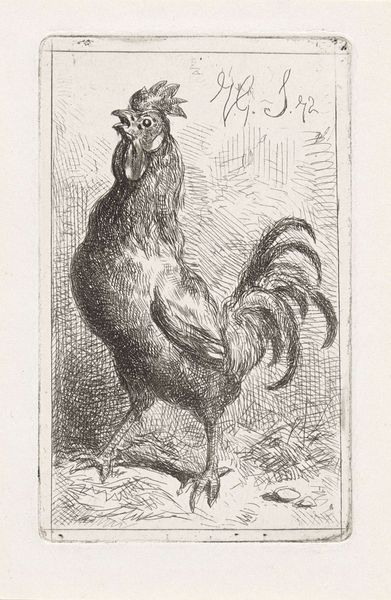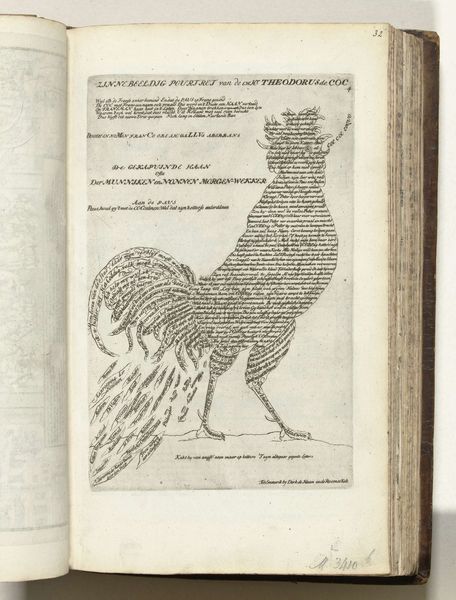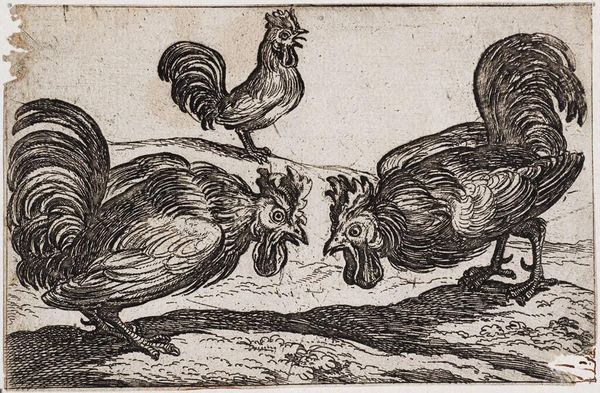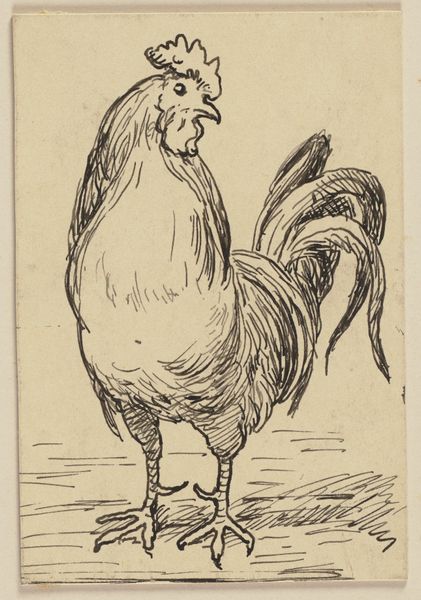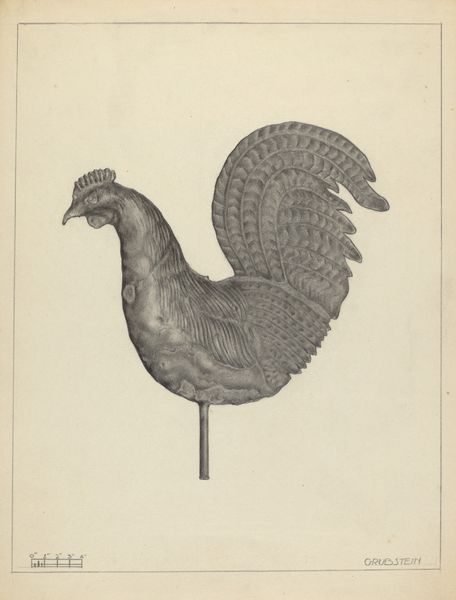
#
aged paper
#
toned paper
#
sketch book
#
personal sketchbook
#
pen-ink sketch
#
pen and pencil
#
pen work
#
sketchbook drawing
#
storyboard and sketchbook work
#
sketchbook art
Dimensions: height 120 mm, width 80 mm
Copyright: Rijks Museum: Open Domain
Curator: This pen-and-ink drawing, titled "De Wakkere Haan," or "The Wakeful Rooster," was created by Pieter van Woensel sometime between 1795 and 1796. It's a study contained within a sketchbook. Editor: My first impression is its wonderful, almost stark simplicity. The rooster stands alert, the lines capturing a wiry energy and a sense of focused observation. It looks like a model illustration. Curator: Absolutely. Van Woensel’s sketchbooks provide invaluable insight into the late 18th-century artistic and pedagogical practices. Images such as these weren't simply artistic exercises; they were often intended to impart moral lessons. Consider the Dutch proverb inscribed beneath the rooster—it speaks of the importance of early education. Editor: Indeed. And it strikes me how the minimalist strokes efficiently convey the rooster’s texture—the feathery quality achieved with such economy of line is quite beautiful. It has to be considered the importance of sketch work within an artistic approach, to test composition, lines and even movement. Curator: The choice of the rooster itself is not accidental. Historically, the rooster has served as a symbol of vigilance, courage, and even resistance, resonating with the revolutionary fervor sweeping Europe at the time. Presenting it in such simple illustrative form allowed wide replication. Editor: I'm interested by that parallel, although in stylistic terms, the use of blank space adds emphasis. It removes the noise of the scene and almost lifts the image from the paper, which enhances that message even further. Curator: I think looking at the social role this work served during this time allows the consideration of images that aren't particularly aesthetically refined. Sketchbooks of the day were tools. In that, there is certainly a refinement that can be admired. Editor: Yes, exactly. Studying this allows us a close engagement with not only an image of fine construction but one filled with socio-political information. Curator: And appreciating the visual economy allows the viewer to grasp easily what would've been the socio-political goal of the image. It all helps us have a deeper sense of what was once considered important in a specific location at a specific time.
Comments
No comments
Be the first to comment and join the conversation on the ultimate creative platform.

